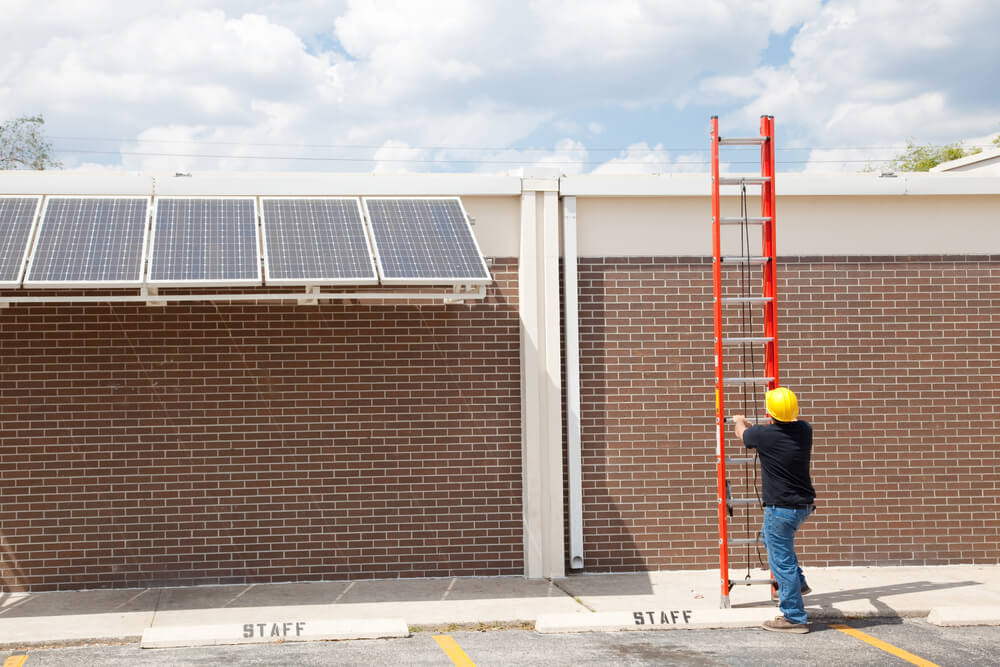Editor’s note: ImpactAlpha has partnered with HIP Investor to highlight upcoming bond issues with social and/or environmental significance. Disclaimer: Nothing in this post or on ImpactAlpha.com shall constitute an offer to sell or solicitation of an offer to buy bonds.
- CUSIP bond identifier: 84247PMU2
- Issuer and obligor: Southern California Public Power Authority
- Impact entity rated by HIP: Southern California Public Power Authority (green bond)
- Muni sector: Electric utilities
- Closing date: 11/14/2023
- Bond amount: $162,100,000
- HIP impact rating: 67.2 connoting “net positive” on a 100-point scale
- Opportunity Zones in the issuing entity: 879 zones in the state of California, covering over four million residents in low-income areas
- Climate threat resilience rating: 46 of 100 (less than 50 connotes higher climate risk)
Municipal bonds financing long-term purchases of power often cover natural gas. This impact-oriented bond analysis highlights the Southern California Public Power Authority, or SCPPA, which issued a green bond of $162 million to refinance its power purchase agreement for wind energy from the Windy Point wind project.
Windy Point is a 262.2 megawatt wind farm of 114 wind turbines in Klickitat County, Wash that is owned and operated by Windy Flats Partners, LLC. SCPPA agreed in 2010 to purchase all of the energy generated from the Windy Point for a period of 20 years. There are two participants in the power purchase agreement: the Los Angeles Department of Water and Power, which has a share of just over 92%, and Glendale Water and Power, with almost an 8% share of the project.
The renewable energy supply from this project serves almost 5 million Californians (2 million customers) across 11 municipal utilities, as well as one irrigation district, and will supply 16% of California’s power.
SCPPA’s new green bond issue will be used to refinance a 2010 bond issuance to pay for energy from Windy Point until 2030.
Separately, an amendment to the original power purchase agreement extended the delivery term by an additional four years, until 2034. The new bond issue does not cover the extension period.
California’s energy context
In 2002, California required electricity providers to ensure that renewable energy meets a specified minimum proportion of their electric load. The law has since been updated and now requires utilities to distribute 60% renewable energy by 2030. It currently sets one of the most ambitious renewable energy standards in the US.
As of 2020, California’s renewable energy portfolio standard, or RPS, has contributed to the decline in GHG emissionsin the electricity sector — the primary source of California’s GHG emission reductions — by 40 million metric tons, or 40% compared to 2010. When combining RPS-eligible sources with other zero-carbon energy, such as hydroelectric generation and nuclear, 59% of the state’s retail electricity sales come from non-fossil fuel sources.
Wind energy is the state’s largest source of renewable energy, making up 40% of the state’s renewable energy capacity and 10.8% of total electricity.
Some credit rating agencies assess Windy Point as essential to meeting California’s renewable energy portfolio standard, or RPS. It has great potential to support the state’s climate neutrality goals and mitigate negative impacts of climate change in the region.
Development of the wind and other renewable energy sectors also contribute to employment opportunities, local business support, related clean energy sectors and industires, and climate technology innovation.
HIP impact assessment
The SCPPA green bond earns a “net positive” HIP rating of 67.1 on a 100 point scale. It comes in above the electric utilities sector’s average of 45.2. HIP measures the impact of 1,718 electric utilities across the US based on 15 metrics across our four pillars of health, wealth, earth and trust. For electric utilities, the earth pillar is the most material and highest weight in the HIP Rating to focus on clean energy production and delivery.
SCPPA outperforms other utilities in the health and earth pillars in particular, receiving almost double of sector’s overall averages for those two pillars.
Highly-weighted individual metrics include: “air emissions,” which rates the levels of sulfate and nitrate particles in the atmosphere relative to total energy generated; “power mix,” measuring the level of carbon dioxide per total energy generated; and “reliability,” assessing utilities on energy blackouts per customer (excluding “major event days” that affect 10% or more of customers).
SCPPA’s rating is driven by the underlying data in the “air emissions” and “power mix” metrics, both of which are modeled based on the percentages of all energy generated or purchased by a utility from fossil fuels. The utility has a significantly smaller reliance on coal (0.1%) than the electric utilities average of 24%, no reliance on energy generated from oil, compared to 0.6% sector-wide. It has an above-average supply of fossil-free sources including nuclear, solar and geothermal.
An area where SCPPA needs improvement is reduction of the utility’s reliance on natural gas for energy generation (currently standing at 41%, above the sector’s average of 36.2%). Also: increased transparency and reporting in the wealth pillar metrics, such as the costs for the existing emissions control equipment, the percent of customers utilizing net metering technologies, and the percent of revenue spent on energy efficiency incentives.
Overall, California is leading the clean energy transition, which has become a major force for state-wide investments. Investing in this bond would contribute to the California climate-transition process while offering a tax-advantaged investment opportunity for those who seek to align their financial goals with commitment to a sustainable future.
DISCLOSURES: HIP Investor Inc. is a state-registered investment adviser in several jurisdictions, and HIP Investor Ratings LLC is an impact-ratings firm evaluating impact and ESG on 123,000 municipal entities, 263,000 muni-bond issuances, and 12,000 corporates for equities and bonds. HIP Impact Ratings are for your information and education – and are not intended to be investment recommendations. Past performance is not indicative of future results. All investments are risky and could lose value. Please consult your investment professionals to evaluate if any investment is appropriate for you, your goals, and your risk-return-impact profile.
Anna Rautenberg is an ESG impact investing analyst at HIP Investor Ratings.











